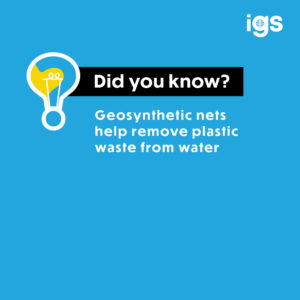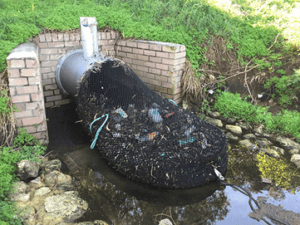
An estimated 23 million metric tons (Mt) of waste plastic enters our rivers, lakes and oceans every year. This could grow to 90 Mt by 2030.
Much of the plastic in aquatic systems is due to mismanagement of single-use consumer products such as the 500 billion plastic bottles produced annually worldwide. Once discarded, these plastics may enter our waterways via urban drainage systems.
Geosynthetic nets can be used as ‘trash traps’ to catch plastic waste in drainage systems. The nets trap solid waste carried by stormwater into drainage networks. Once trapped, the collected waste can be recycled or safely disposed of.

**
Geosynthetic solutions should be fully investigated on every infrastructure project to ensure they meet the needs of the present without compromising the ability of future generations to meet their own needs.
Find out more about how geosynthetics are making a difference by downloading the IGS Sustainability eBook here or visiting our Sustainability page.






















